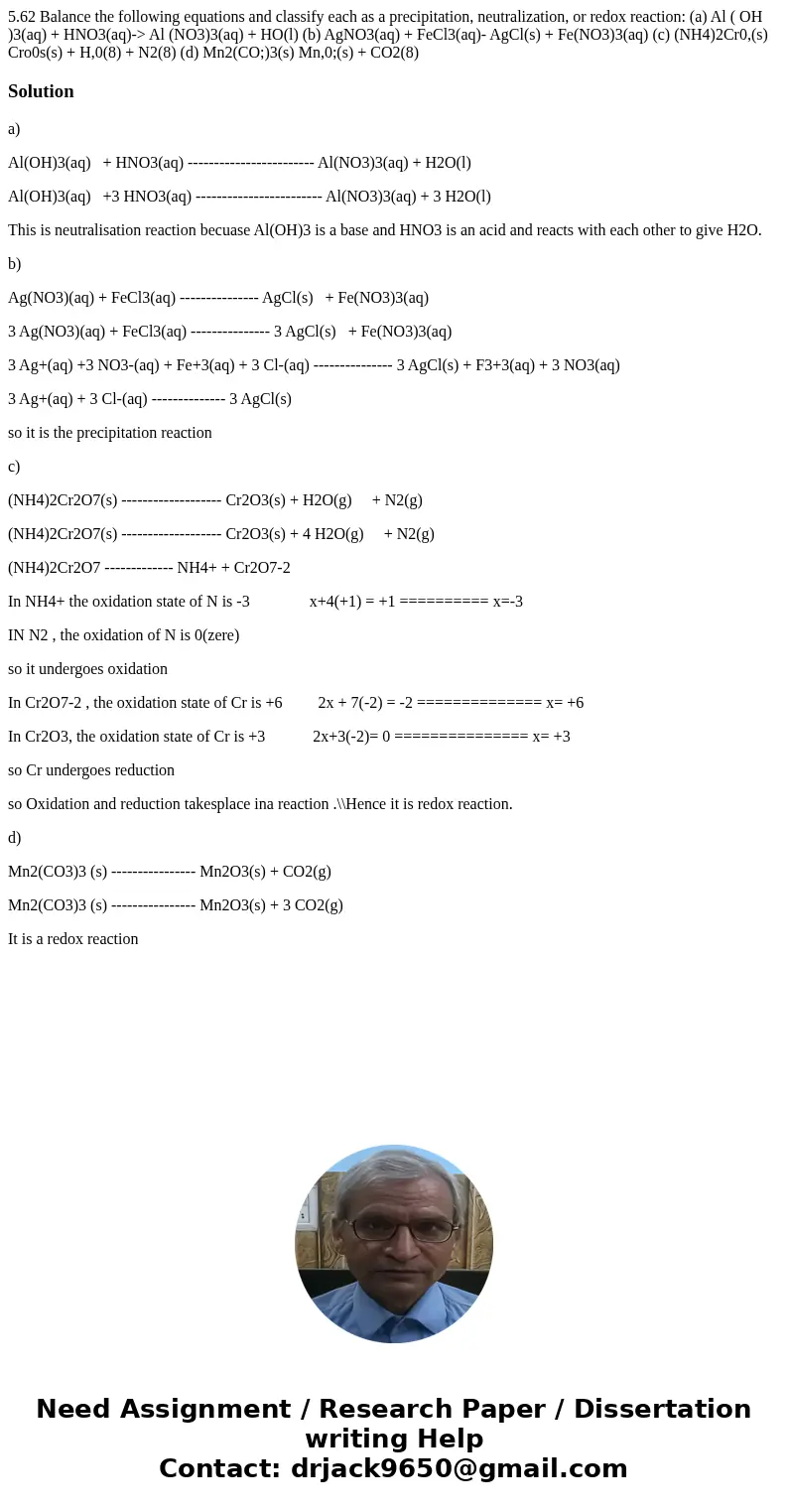562 Balance the following equations and classify each as a p
Solution
a)
Al(OH)3(aq) + HNO3(aq) ------------------------ Al(NO3)3(aq) + H2O(l)
Al(OH)3(aq) +3 HNO3(aq) ------------------------ Al(NO3)3(aq) + 3 H2O(l)
This is neutralisation reaction becuase Al(OH)3 is a base and HNO3 is an acid and reacts with each other to give H2O.
b)
Ag(NO3)(aq) + FeCl3(aq) --------------- AgCl(s) + Fe(NO3)3(aq)
3 Ag(NO3)(aq) + FeCl3(aq) --------------- 3 AgCl(s) + Fe(NO3)3(aq)
3 Ag+(aq) +3 NO3-(aq) + Fe+3(aq) + 3 Cl-(aq) --------------- 3 AgCl(s) + F3+3(aq) + 3 NO3(aq)
3 Ag+(aq) + 3 Cl-(aq) -------------- 3 AgCl(s)
so it is the precipitation reaction
c)
(NH4)2Cr2O7(s) ------------------- Cr2O3(s) + H2O(g) + N2(g)
(NH4)2Cr2O7(s) ------------------- Cr2O3(s) + 4 H2O(g) + N2(g)
(NH4)2Cr2O7 ------------- NH4+ + Cr2O7-2
In NH4+ the oxidation state of N is -3 x+4(+1) = +1 ========== x=-3
IN N2 , the oxidation of N is 0(zere)
so it undergoes oxidation
In Cr2O7-2 , the oxidation state of Cr is +6 2x + 7(-2) = -2 ============== x= +6
In Cr2O3, the oxidation state of Cr is +3 2x+3(-2)= 0 =============== x= +3
so Cr undergoes reduction
so Oxidation and reduction takesplace ina reaction .\\Hence it is redox reaction.
d)
Mn2(CO3)3 (s) ---------------- Mn2O3(s) + CO2(g)
Mn2(CO3)3 (s) ---------------- Mn2O3(s) + 3 CO2(g)
It is a redox reaction

 Homework Sourse
Homework Sourse